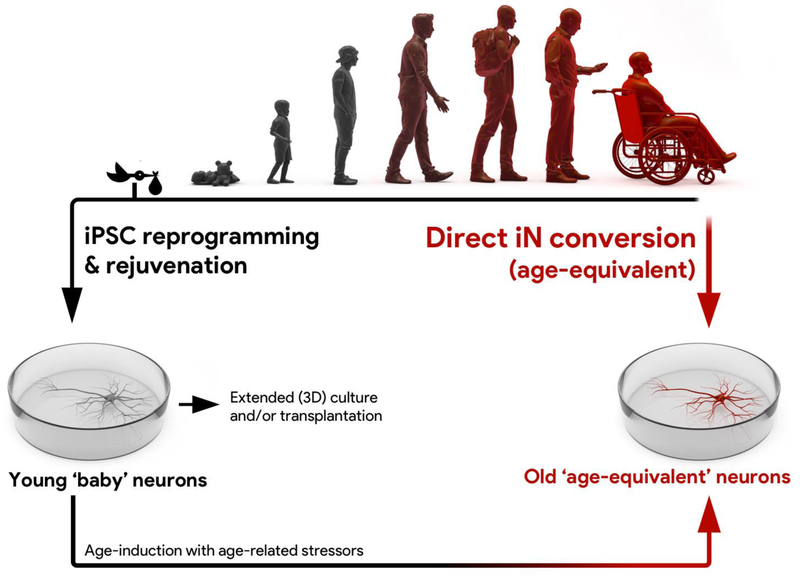Figure 1 |. Direct iN conversion and iPSC reprogramming to study neuronal aging and age-related diseases.
Cultures of functional human neurons can be generated via direct conversion of human somatic cells into induced neurons (iNs), as well as via iPSC reprogramming and differentiation. Directly converted iNs from fibroblasts from elderly humans preserve key features of cellular aging and are in many aspects considered an ‘age-equivalent’ reflection of an old person’s brain cells. As a result, iNs represent a new and upcoming model system to study cellular and molecular aspects of brain aging, as well as of age-related diseases in a patient-specific context. By contrast, iPSC reprogramming is associated with a widespread rejuvenation of cellular and molecular aging phenotypes, as iPSC-derived neurons even from very old human donors resemble rejuvenated and prenatal-like ‘baby’ neurons. Extended in vitro or in vivo culture of iPSC derivatives as monolayers or 3D cultures could lead to cellular phenotypes that more closely resemble adult or even aged cells. Further, rejuvenated iPSC-derived neuronal cultures can be ‘made old’ by the application of age-inducing stressors; a strategy that might help to uncover aging-related triggers of diseases.

